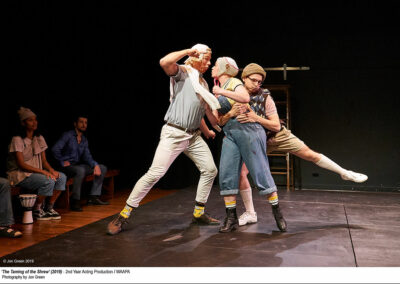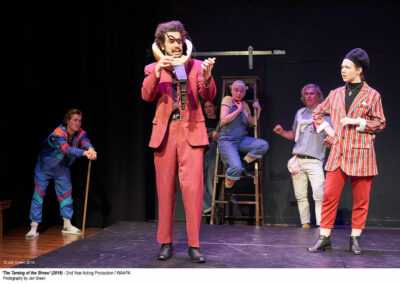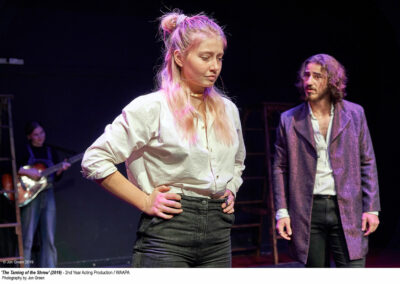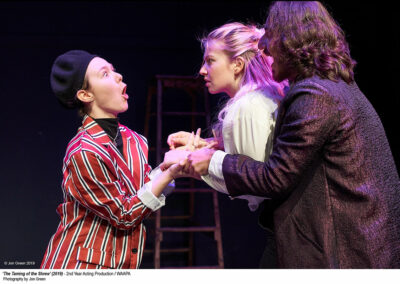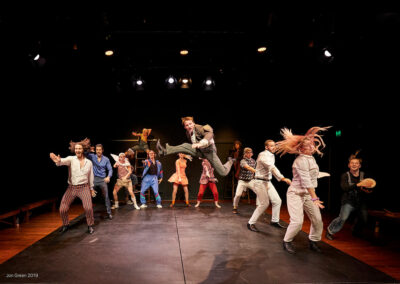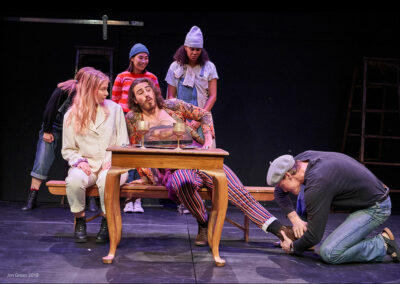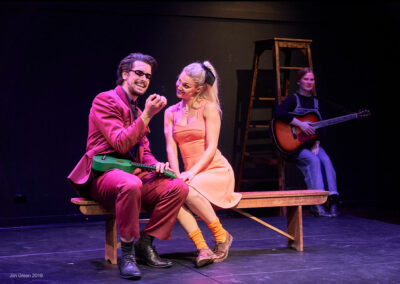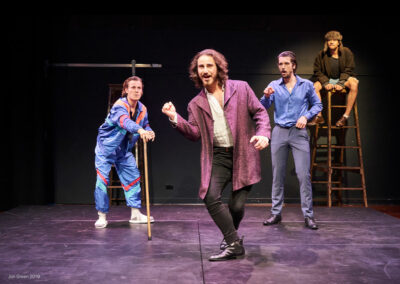The “Taming” of the Shrew by William Shakespeare
Western Australian Academy of Performing ArtsDirector's Notes / Concept Images
The Taming of the Shrew (Director’s Note)
WAAPA 2019
Dr. Peter Zazzali
Performed in the early-1590s, The Taming of the Shrew reflected Early Modern England’s subjugation of women at the hands of their male counterparts. Despite the irony that a queen ruled supreme at the time, Britain was a decidedly patriarchal society in which women did not have the right to own land, receive a university education, or pursue a livelihood. Indeed, their life choices were essentially reduced to finding a husband or “getting [themselves] to a nunnery” as it were. With respect to the former and more common option, Shakespeare’s shrewish heroine Kate is desperate to find a mate to whom she can “love, serve, and obey.” The problem of course is that no one in Padua wants to betroth her on the grounds that she has been objectified as a “fiend,” a “monster,” and the “devil’s dam.”
George Bernhard Shaw famously called the play, “a vile insult to womanhood and manhood from the first word to the last.” Although never a fan of Shakespeare, his point is nevertheless apt, especially for contemporary audiences of the #MeToo era. It would be as erroneous as it would be irresponsible to straightforwardly present The Shrew without addressing its gender politics. Both the Kate/Petruchio and Suitors/Bianca plotlines deny women agency and locate them as property. The former narrative rewards a hero who literally beats and psychologically tortures his counterpart into marrying him (ostensibly for his financial gain), before “taming” her into abject submission, the culmination of which occurs during “the speech” with Kate quite literally scripted to bow beneath “her lord, her king, her governor.”
Despite the play’s misogyny, Shakespeare offers us clues for rethinking the Kate/Petruchio relationship. First, it is important to note that the two are genuinely attracted to each other, physically as well as intellectually, and theirs is a partnership of shared respect—perhaps even love. They clearly engage in a “game” of lust and mischievousness that extends beyond the boundaries of social acceptance. They are equally outlandish, fiercely independent, and downright lonely. In fact, they need each other.
While the play’s spousal abuse is unmistakable, we have chosen to problematize this trait through a liberal—if not deconstructed¾interpretation that relocates Katherine and Petruchio as lovers, partners, gamesters, and yes, equals. Moreover, by restoring its play-within-a-play framework, marked by the Christopher Sly sequence (The Induction), we offer a world of Commedia Dell Arte-inspired hijinks lending to the plot’s farcical essence, thereby softening its violent and cruel underpinnings. As such, we invite you to enjoy a “Shrew” that is respected if repositioned for the modern age.
Cast & Design Team
- Set/Costume Design:
- Cameron Malacari
- Lighting Design:
- Rhys Pottinger
- Voice/Text Coach:
- Jean Goodwin
- Choreographer:
- Molly Grigg
- Cast:
- Isabelle Basen, Evan Confos, Morgan Dukes, India Goodhand, Molly Grigg, Josh Peardon, Lucy Lock, Domino Mccarthrion, Connor Merrigan-Turner, Allegra Monk, Hannah Penman, Nick Perry, Lachlan Ranson, Jackson Rutherford, Joanna Tu, Joshua Joseph Tanti, Virgona, and Darius Williams

